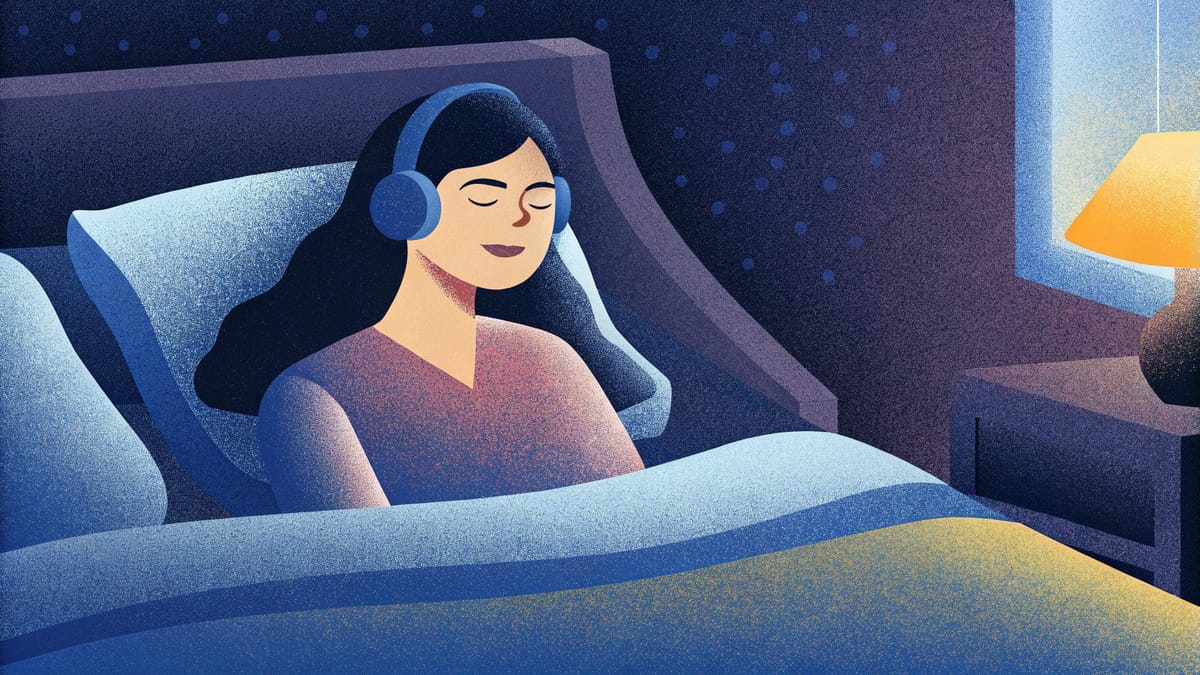How Do Audio Bedtime Stories Compare to Reading Before Bed (Exploring Relaxation and Cognitive Benefits)
Explore the relaxation and cognitive benefits of audio bedtime stories versus traditional reading, and discover how each method can enhance your nighttime routine and improve sleep quality.

Have you ever wondered whether reading a physical book or listening to an audio bedtime story is the better way to unwind before sleep? Both options offer incredible benefits, but they cater to different needs and preferences. Let’s explore how each method enhances your bedtime routine and see which might be the perfect fit for your nightly wind-down.

Cognitive Engagement And Skill Development
Both reading and audio bedtime stories contribute to mental engagement, but they do so in distinct ways. When you read a physical book, your brain activates processes that improve visual processing, focus, and critical thinking.
This method strengthens your ability to decode text, stretch attention spans, and expand your language skills. It’s no surprise that avid readers often exhibit enriched vocabularies and sharp comprehension.
On the other hand, audio bedtime stories ignite a different kind of cognitive engagement. Listening to a soothing narrative hones your auditory processing skills, compelling you to concentrate on tone, language, and rhythm.
This practice not only improves listening abilities but also stimulates your imagination. If you’ve ever pictured vivid scenes or characters while listening to a story, you’ve experienced the unique way audio stories can spark imaginative thinking.
Sleep Quality And Relaxation
Relaxation plays a crucial role in preparing your mind and body for sleep, and stories—whether read or heard—excel at soothing the psyche. Reading a physical book signals to your brain that it’s time to wind down, creating an environment conducive to sleep.
The tactile experience of turning pages and immersing yourself in words fosters a sense of stillness, reducing stress levels along the way.
Meanwhile, audio bedtime stories have their own charm. The calm, steady rhythm of a narrator’s voice can lull you into a state of relaxation without requiring you to focus your eyes on text.
This auditory method offers a hands-free path to ease your body into sleep mode. However, it’s worth noting that some devices used for recording or playback, like phones emitting blue light, may disrupt sleep cycles.
To mitigate this, platforms like Dreamland Tapes conveniently offer audio bedtime stories that you can play via low-light devices or external speakers for a hassle-free wind-down.

Accessibility And Convenience
One of the standout benefits of audio bedtime stories is their sheer convenience. With just a click, you can immerse yourself in a captivating story while lying comfortably in bed.
This hands-free aspect makes them an excellent choice for people with visual impairments or those who simply want to relax without holding a book.
Audio stories are also perfect for multitasking—imagine dimming the lights, closing your eyes, and letting your imagination travel along with the narrative.
On the flip side, physical books hold their own charm in this comparison. Reading requires undivided attention and limits digital distractions, creating an intentional bedtime routine.
Many find the act of reading to be a grounding experience, connecting them to tangible words and stories in a way digital formats cannot replicate. Ultimately, it comes down to personal preferences and needs.
Emotional And Social Development
Storytelling nurtures emotional and social growth in both readers and listeners. In a bedtime context, physical books often encourage bonding, especially for families.
If you read aloud to a child, for example, they gain the opportunity to hear how words are pronounced, observe sentence structure, and connect deeply with you in a shared experience.
This ritual builds trust, emotional connection, and early literacy skills.
Audio bedtime stories can also evoke powerful emotions, guiding listeners through diverse perspectives and experiences. While they may not provide the direct parent-child bonding of shared reading, they still allow adults and children alike to tap into universal emotions like empathy and curiosity.
Platforms like Dreamland Tapes specialize in creating audio bedtime stories that not only promote relaxation but also offer thoughtful narratives to enrich emotional and social understanding.
Information Retention And Comprehension
When it comes to absorbing information, both reading physical books and listening to audio stories offer compelling benefits. Studies show that comprehension rates are comparable between reading and listening, meaning you can retain a story’s key elements through either method.
That said, individual preferences play an essential role—some people find it easier to grasp details visually, while others thrive on auditory cues.
Interestingly, audio stories may leave a lasting impression through the emotional delivery of the narrator's voice. A well-told tale can linger in your mind long after the final word is spoken, benefiting auditory learners or those who seek immersive storytelling.
By contrast, physical books often create muscle memory and visual links to words on the page, making them ideal for those who process information better through text.
Key Takeaways
- Both reading and audio bedtime stories enhance relaxation and cognitive skills, but they cater to different preferences and learning styles.
- Physical books encourage focus, routine, and emotional bonding, while audio stories offer unmatched convenience and imaginative engagement.
- Your choice depends on personal needs, with platforms like Dreamland Tapes providing a seamless option for enjoying soothing, high-quality audio bedtime stories.